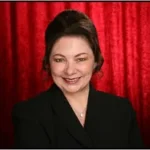Since our train back to Paris did not leave until midday, we went food shopping in the morning for our lunch onboard, and then spent some time putting the Airbnb back in order. Then we locked up and wheeled our suitcases back through the main square where yet another market was crowded and busy. We met our hostess at the garage, pulled out, handed her back the keys, and thanked her for a great stay. We drove to the train depot where we were able to return our rental car, and a half-hour later we were already sitting in our seats on the train.
We arrived back in Paris at Gare de Lyon and Vere texted our first Airbnb host, letting him know we were back and would meet up for the keys at the building’s front door. We chatted before entering, finding out that he was a doctor and he had gotten the apartment for his son to live in, but he preferred being at home, so the place became a rental. He actually had spent time in LA when he was a kid and that’s how he learned English. That was exactly how Vere had learned French, from being in Paris when he was a boy. We took the elevator up, one person and their suitcase at a time, got into the apartment and relaxed from our journey.
We did not wait long, as it was a walk right back to the train station to get a local train for a half hour heading south to visit the Vaux-le-Viscomte Chateau and gardens. One takes the train to the town of Mulan and then must get a taxi or Uber to the estate.
The place has an interesting history. Born in 1615 into a family of wealthy parliamentarians, Vaux-le-Vicomte’s creator, Nicolas Fouquet, was known for his intelligence, boldness, and devotion to the monarchy. Though his fabled generosity was at times self-serving, his courteousness inspired loyalty among his followers. Like his family emblem, the squirrel, and motto, “Quo non ascendet” (What heights will he not scale), Fouquet experienced a rapid social ascent. In 1653, he was named Superintendent of Finance by Cardinal Mazarin, Chief Minister to the young King Louis XIV.
Fouquet was charged with replenishing the French treasury and worked closely with Mazarin’s private secretary, Jean-Baptist Colbert. At Mazarin’s death in 1661, it seemed as if Fouquet would have been made Chief Minister, but the 22-year-old Louis XIV decided to abolish the post. Instead, he took absolute control of the French state. Colbert was jealous of Fouquet’s success and took the opportunity to accuse his rival of embezzling millions of Francs. In reality, it had been Mazarin who had stolen the money. However, despite warnings from his friends, Fouquet did not suspect that a plot was brewing.
On the night of August 17, 1661, Nicolas Fouquet hosted a lavish soirée to honor Louis XIV at his new estate, Vaux-le-Vicomte. Days earlier, Louis XIV had succumbed to Colbert’s scheming and made his decision to imprison Fouquet. Yet the king walked through the gardens, dined, and enjoyed a theatre play followed by enchanting fireworks, without revealing a word. Of this turn of affairs, the great author Voltaire would later write “On August 17, at six in the evening Fouquet was King of France, at two in the morning, he was nobody.”
Three weeks later, Fouquet was arrested in Nantes by d’Artagnan, captain of the King’s musketeers. The “trial of the century” dragged on but eventually the judges voted to have Fouquet banished from France. However, Louis XIV intervened, exercising his prerogative to overrule the judges and imposed a sentence of life imprisonment. This was the only time in French history that a Monarch used his pardoning power to worsen the sentence. Fouquet was then incarcerated in Pignerol, where he died on March 23, 1680.
The Chateau was built by Louis Le Vau, the king’s architect, who specialized in Italianate architecture. Beginning with Fouquet’s request to build the castle in 1653, Le Vau began a new form of architecture for France for the next 150 years. The grounds are laid out in a series of different levels, arranged with wide terraces, with a far-reaching vista in a straight line, two kilometers away to a level where a large statue of Hercules can be seen. The rooms of the chateau became interconnected, with utilitarian rooms on the basement level, ceremonial purposes on the ground floor and bedrooms on the upper floor. Le Vau introduced the “hipped” roof to cover a double width of rooms with an ovoid central dome for aesthetic effect. Along with the home itself, were added corner pavilions, a moat with drawbridge, gardens, and fountains.
We were able to view the chateau on all levels, as if the Fouquet family were still living there. However, the rooms were only lit by window light and candles to represent what it would have looked like to walk through. Thus, many photos were darker than usual. Lines of guests walked the halls examining everything the count’s guests would have seen. There was the master and mistress’ bedroom, each of their personal offices, the Great Square room with tapestry walls, the Muse’s room, the games parlor, and the greeting room.
The chateau was the first to have a formal dining room. Before, any guests of that era would have had their meals delivered to their rooms. There were baroque furnishings, tapestries, and statues in every room. The kitchen was grand with many tables covered with meals being prepared. There was even a boar about to be prepared. All fake, of course. There was a very grand circular room where images were shown on the ceiling, of what once was painted. A myriad of people walked about in full costume of the period. There was also a carriage museum to see, but we took the additional time we had to just walk the immense formal French gardens, which had been laid out from 100 acres of woodlands. The grounds were meant to portray the perfect “mise en scène” (staging) for discovery, fantasy, and pleasure. Just stepping out on to the back stone patio, facing the huge spread out gardens, we could not help be impressed. In the far distance one could just glimpse the golden statue of Hercules.
A peacock combed back and forth, and people in period costumes as well, paraded the house and gardens. Many came already garbed in costumes that they had designed and made themselves. There were so many of these costumed people that it really leant a great feel for what it must have been like to be a guest at this estate. Hundreds of people milled about the grounds and took thousands of pictures. One could also book to have a special dinner in a formal dining space to the side of the castle. Then as the light began to fade about 9:00 p.m., thousands of candle pots placed along every path in the garden and in the windows of the Chateau began to sparkle like golden diamonds. The central fountain reflected the rosy sunset. If we had stayed longer, fireworks were to go off at 10:00 p.m, but we were exhausted, and after a perusal through their gift shop, with a few purchases, we left out the front and got one last look at the castle in candlelight. It was truly a magnificent look at an extraordinary past.

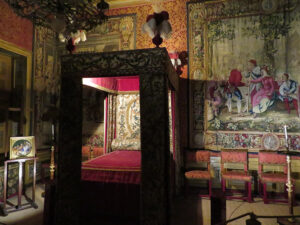
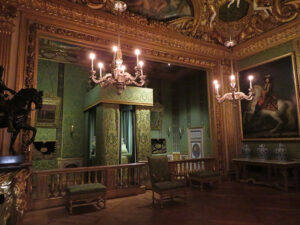
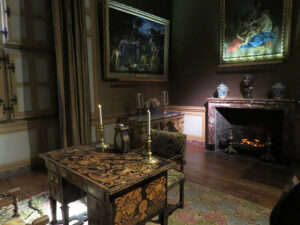
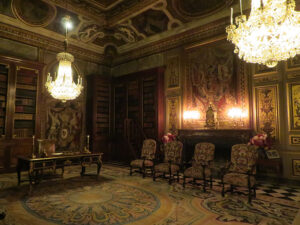
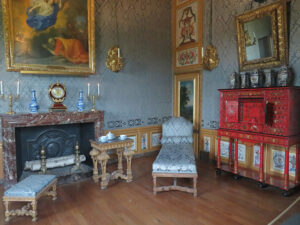
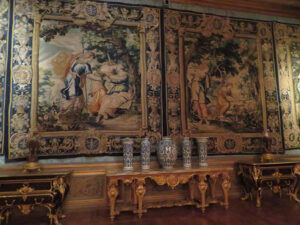

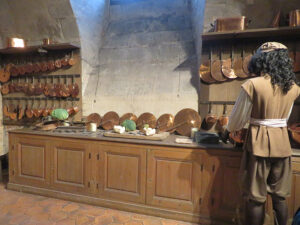
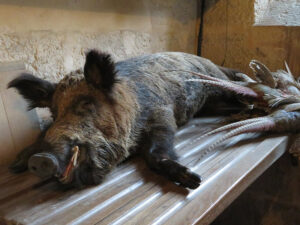
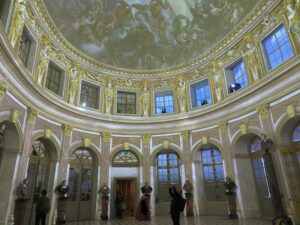
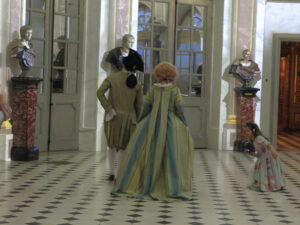
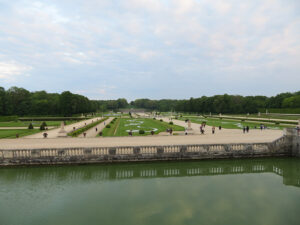
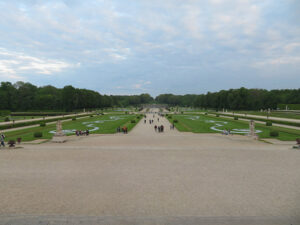
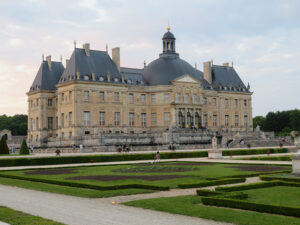
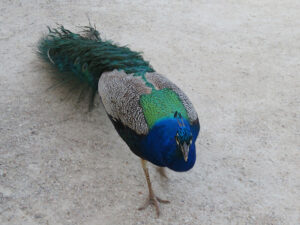
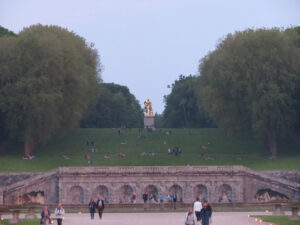
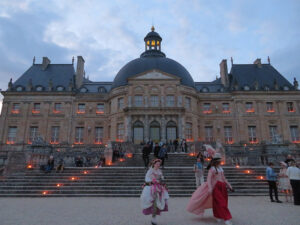
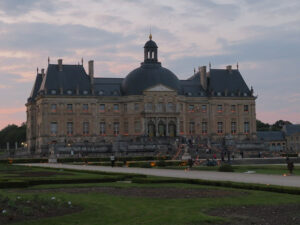
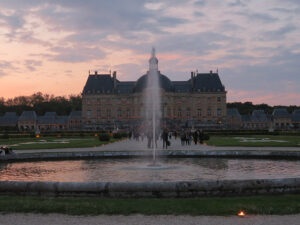
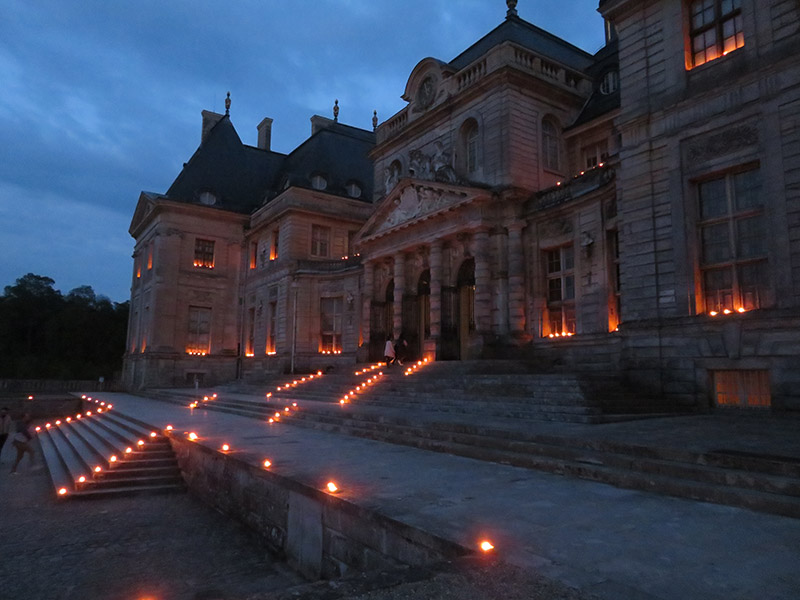
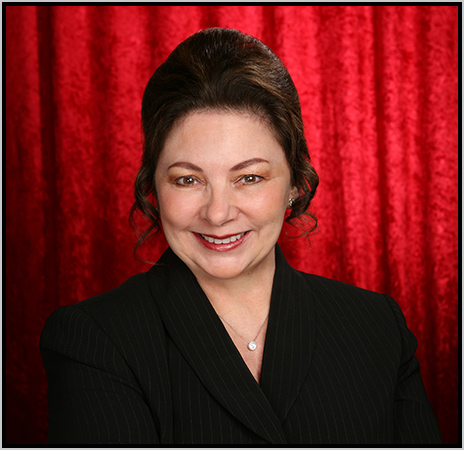 The official website of Lita-Luise Chappell, writer on sex, magic, food, distant lands, and everyday life with articles, poetry, novels, travelogues, rituals, cookbooks, and short-stories.
The official website of Lita-Luise Chappell, writer on sex, magic, food, distant lands, and everyday life with articles, poetry, novels, travelogues, rituals, cookbooks, and short-stories.